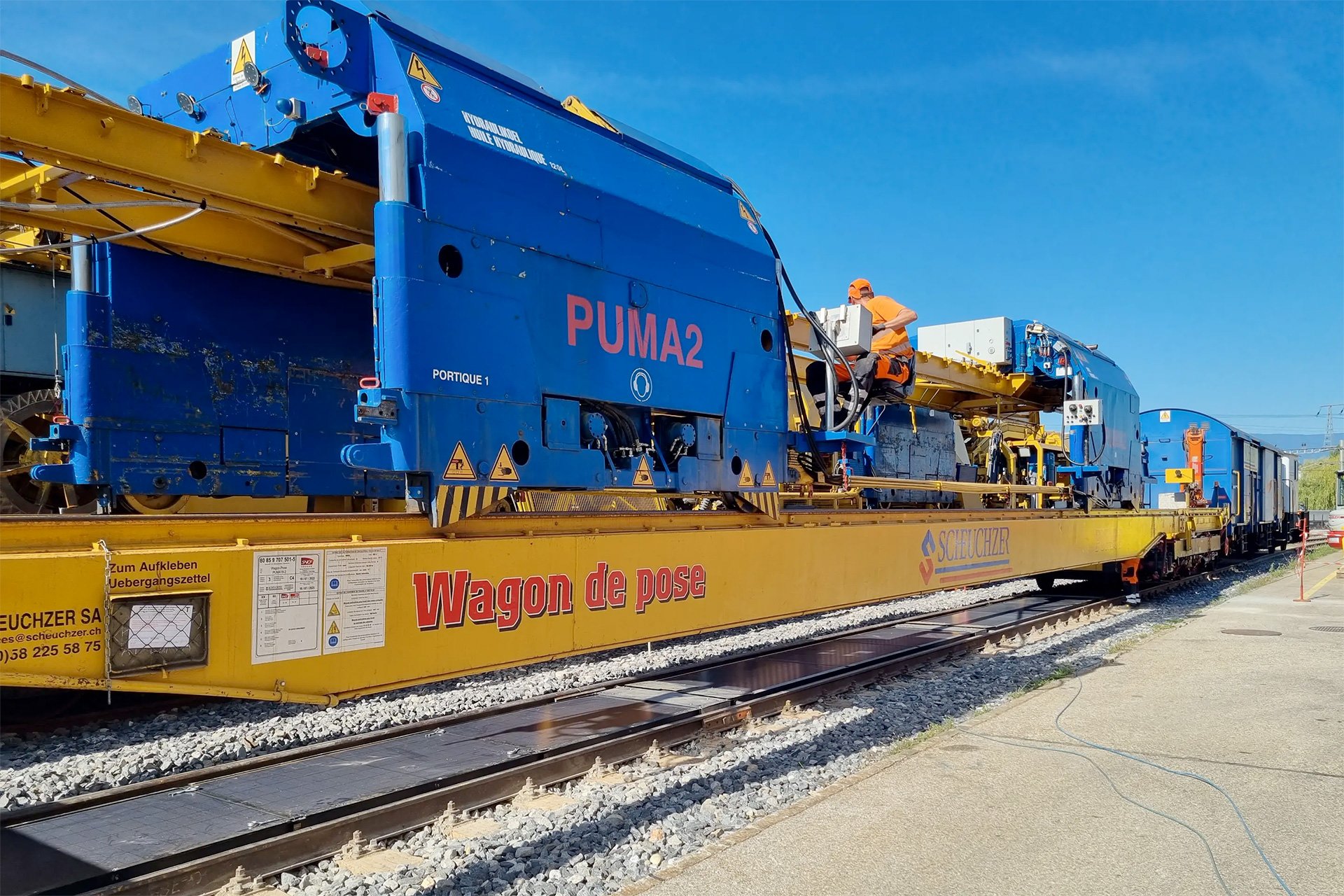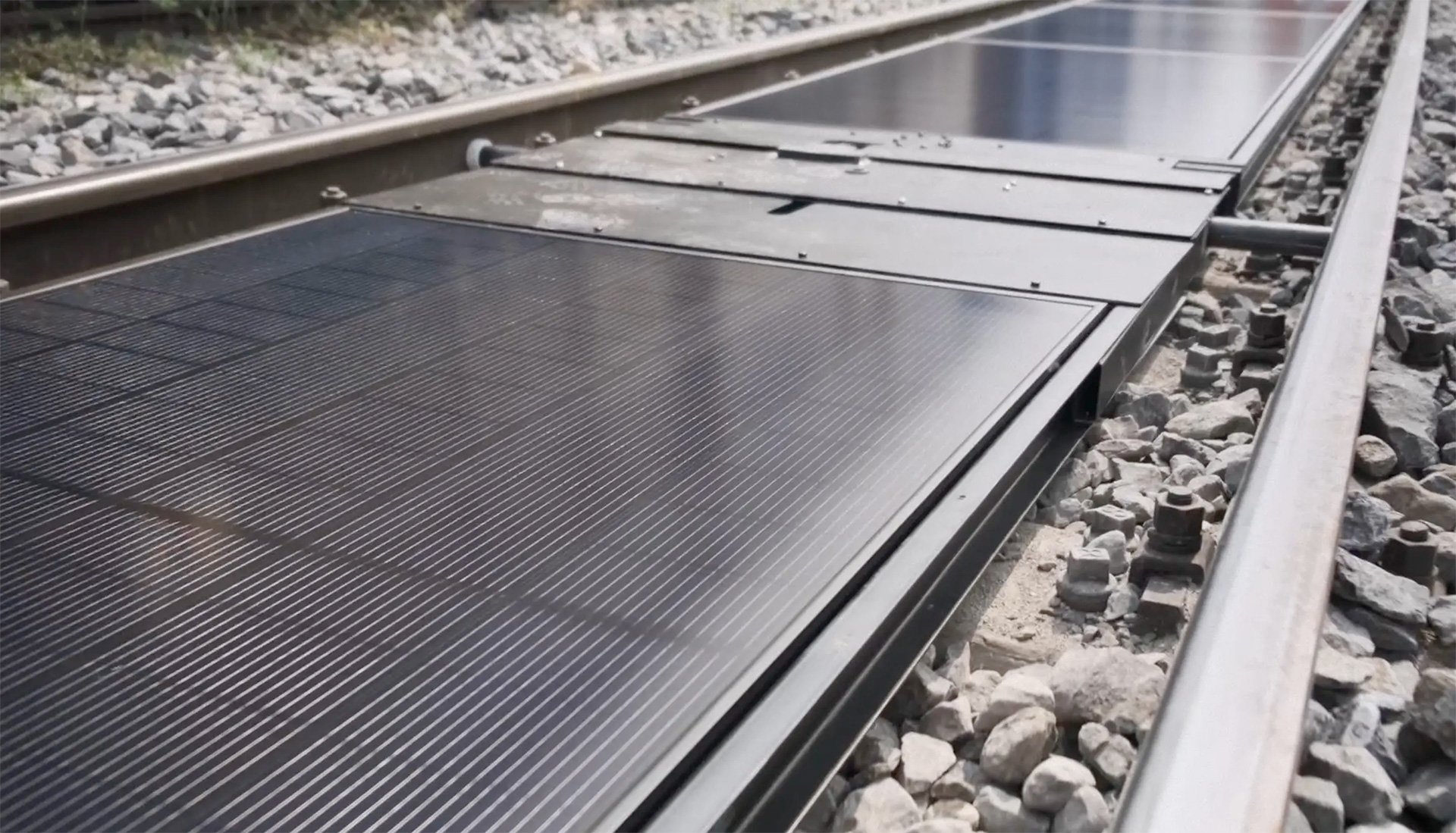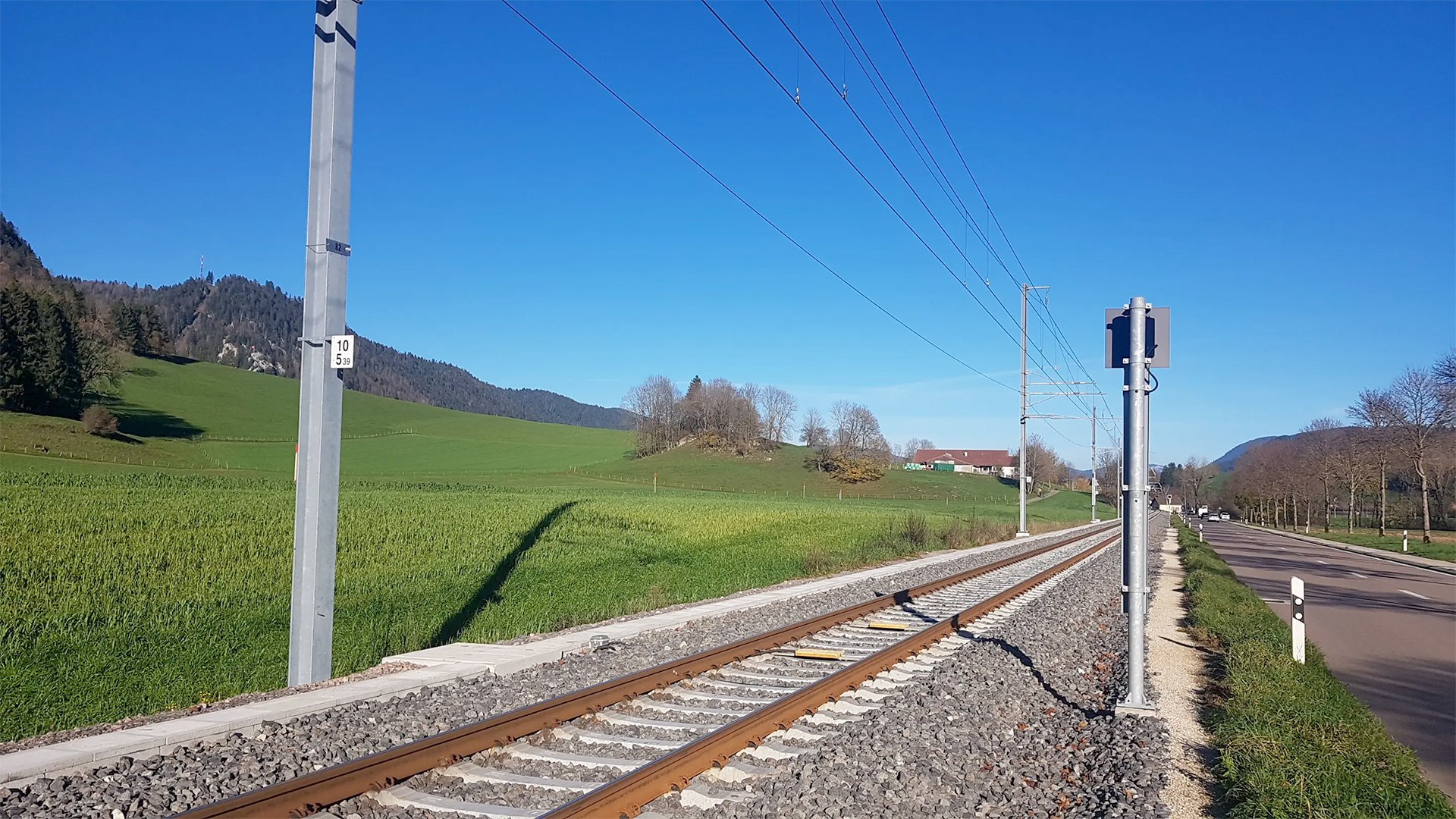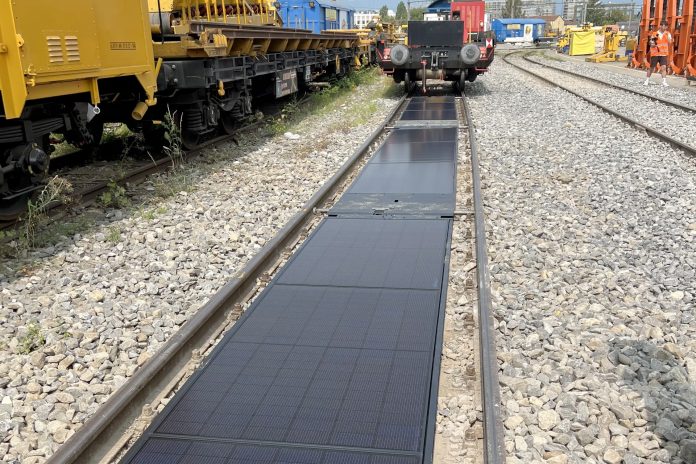Swiss startup Sun-Ways is spearheading an innovative solar project that aims to transform underutilized space between railway tracks into energy-generating hubs. With large-scale solar farms and rooftop installations already contributing to renewable energy, Sun-Ways sees untapped potential in the gaps between railway lines. This new initiative aims to harness solar power by installing removable photovoltaic (PV) panels between the rails of Switzerland’s extensive rail network.
The potential of railway solar
Switzerland has around 5,000 kilometers of railway tracks, and Sun-Ways estimates that this space could generate up to 1 terawatt-hour (TWh) of electricity annually. If fully realized, this project could meet nearly one-third of the country’s public transport electricity needs while reducing carbon emissions by over 200,000 tons per year.
Sun-Ways’ proposed solution is to install “full black” solar panels, each measuring 1 by 1.7 meters (3.3 by 5.5 feet), between railway tracks. These panels are designed to fit standard railway gauges of 1.43 meters (4.6 feet), although they can be adapted for different gauges when necessary. Each panel is equipped with an anti-reflective coating to prevent glare, and the entire system is housed within a multi-panel array that keeps the components and wiring protected.
Installation and maintenance
One of the critical design features of the system is its removable nature. Panels can be temporarily lifted for track maintenance and then reinstalled once the work is done. This flexibility ensures that the solar panels won’t interfere with regular railway upkeep. To facilitate large-scale installation, Swiss railway maintenance company Scheuchzer SA has developed a machine capable of laying up to 1,000 square meters of Sun-Ways panels per day. This mechanized process speeds up deployment and ensures efficient installation.

The panels have been rigorously tested for stability under extreme conditions, including high-speed trains passing overhead at up to 150 kilometers per hour (93 mph) and strong winds reaching 240 kilometers per hour (150 mph). However, one challenge is the potential impact of snowfall during the winter months. Sun-Ways is exploring solutions, including the use of cylindrical brushes attached to trains to clear snow from the panels, similar to a system proposed for dirt removal.
Energy applications
Once installed, the electricity generated by the panels could be used in various ways. It could power nearby railway infrastructure, such as switches, points, or even stations. Alternatively, the energy could be fed into the national grid or routed to the traction energy network that powers trains, eliminating the need for ground-based inverters. This versatility makes the system highly adaptable to different energy needs across the rail network.
Pilot project in Switzerland
After nearly a year of deliberation, Switzerland’s Federal Office of Transport (FOT) has approved a pilot project for 2025. The test will take place on a 100-meter (330-foot) stretch of the TransN line 221 near Buttes railway station in the Swiss canton of Neuchâtel. The pilot will involve the installation of 48 solar panels, offering a combined capacity of 18 kilowatt-peak (kWp). The panels will be connected to the local grid via the electricity distributor Viteus, in partnership with railway infrastructure specialist DG Rail.

The trial will involve more than just energy generation. Installation and removal tests will be conducted to ensure the system’s long-term functionality, while additional tests will measure its impact on the railway infrastructure. Trains will operate at speeds of up to 70 kilometers per hour (43 mph) during the trial.
Expanding beyond Switzerland
While the Swiss pilot is a significant milestone, Sun-Ways is already looking beyond Switzerland for future projects. The company plans to conduct a feasibility study on a 1,500-meter (4,921-foot) stretch of private track in the municipality of Aigle, which would have an installed capacity of 288 kWp. In addition, Sun-Ways is in the early stages of setting up another pilot with SNCF in France, with similar projects being explored in Spain, Romania, and South Korea.
The company’s ambitions also extend globally, as discussions are underway with rail operators in China, Thailand, Australia, and the United States. These international collaborations could pave the way for a widespread adoption of between-track solar panel installations, potentially transforming railway systems worldwide into significant contributors to renewable energy production.
Challenges and future outlook
Despite the potential benefits, there are challenges to consider. Snow accumulation and dirt buildup are two of the most pressing issues, particularly in regions that experience harsh winters. Sun-Ways has acknowledged this and is actively working on solutions to minimize these disruptions. Another challenge is ensuring that the installation and removal of the panels do not interfere with the normal operation of the railway system.

Nevertheless, the prospects for success are promising. Sun-Ways’ pilot project has received backing from both government agencies and private partners, and the company is engaging academic institutions, such as HEIG-VD (Haute Ecole d’Ingénierie et de Gestion du Canton de Vaud), to conduct independent assessments of the panel prototypes. These evaluations, combined with technical input from engineering firm Geste Engineering, have contributed to the comprehensive plan that earned approval from the FOT.
If successful, this initiative could unlock a new avenue for solar power generation, taking advantage of unused spaces within existing infrastructure. For now, all eyes are on the 2025 pilot project, which could set the stage for broader implementation in Switzerland and beyond.
Source: Sun-Ways



